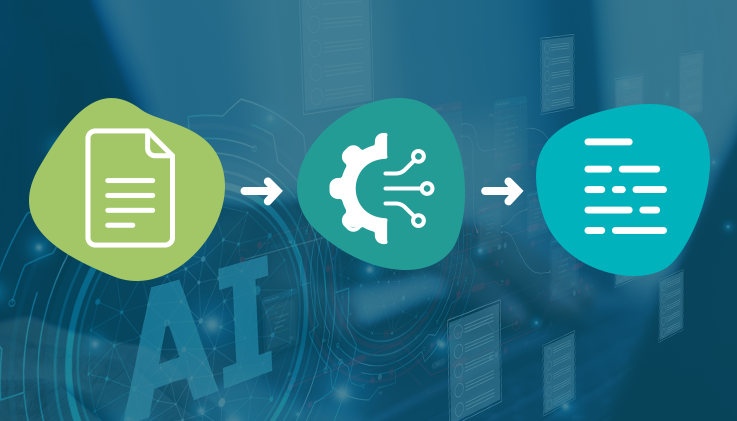Artificial intelligence (AI) has come a long way and is now incredibly advanced. Yet, the human intelligence that created AI remains unbeatable. Well, the big plan is to blend both AI and human touch while dealing with customers digitally.
Customer service, once driven entirely by people, has evolved into a dynamic collaboration between human expertise and AI. It is driven by the need to find the sweet spot where both can be applied effectively for optimal efficiency. As expectations continue to rise, support teams are under increasing pressure. They are expected to be faster and smarter, without losing the personal touch that creates loyalty. This is where human and AI collaboration becomes critical.
For instance, AI can route tickets and surface real-time insights, while human agents, relieved from repetitive tasks, can focus on what they do best, like solving complex problems. Implementing this collaboration will prove to be a winning strategy for thriving contact centers. Businesses have understood that, and they are increasingly looking to adopt the promising approach offered by this hybrid model.
How can you truly unlock customer service excellence with Human + AI models? Which hybrid model will help you achieve the ultimate competitive advantage? We will discuss this and more to understand how AI is your agent’s strategic partner and not a replacement.
Also read: 10 Innovative Uses Of AI In Customer Service And Communication
Redefining customer service: Human + AI partnership models
With the rise of Generative AI (Gen AI), businesses are using AI-powered chatbots, agent-assist tools, and its personalization capabilities to deliver exceptional customer service. Businesses such as yours are implementing AI for digital communication and business process automation in their customer support. And they have got a variety of hybrid models to choose from. Let us explore the different types of hybrid service models that businesses can adopt based on their requirements.
- Human-first, AI-augmented: A human leads the customer interaction as AI works in the background for quick assistance. Currently, this is the most widely adopted model because businesses are empowering their existing agents through AI’s capabilities. This model improves an agent’s productivity by acting as a co-pilot, offering them real-time suggestions and recommending next-best actions to quickly resolve a query.
- AI-first, human-in-the-loop: In this model, the AI takes the lead, but the human agent fully remains in control. Businesses that handle bulk customer queries, such as repetitive or low-complex ones, rely on this model for AI to confidently solve them. Human agents only step in to address those queries where it is important to ensure quality and empathy.
- Human supervising multiple autonomous AI conversations: This hybrid setup is implemented by technically mature companies that have robust AI models that autonomously handle high volumes of interactions. When AI models are trained over time and there is a process in place for continuous AI learning, they efficiently deal with customer interactions, making this model sustainable. Human agents only step in when a customer escalates a query and asks for a human’s intervention.
- Human-agent pairing: Through a sophisticated integration, this hybrid model enables businesses to leverage AI to first understand the context of a query and then hand it over to a human agent. While interacting with a customer, the AI gathers information or solves basic queries. In real-time, the chat history and relevant details are seamlessly passed on to a human agent, which ensures a consistent customer experience.
How human and AI collaboration fuels business success
Gartner predicts that by 2029, AI agents will autonomously resolve 80% of common customer service issues, eliminating the need for human intervention in most routine cases. Wondering why most of the companies would have by then adopted an AI-powered help desk solution? The answer lies in the challenges companies are facing today.
Scaling operations often leads to an influx of customer service requests. As a result, support agents are forced to handle a high number of customer queries, which leads them to feel overwhelmed and experience burnout. When this happens, they are unable to maintain consistency to stay empathetic in every interaction, which is important to deliver a personalized experience.
Here is where AI and human collaboration can completely change the scenario. AI models are not perfect either; they tend to fall short when a query is too complex or they have not been trained to deal with a specific issue. A human can take over queries that require deep understanding of the customer’s issue. When an agent becomes an empathetic problem-solver and utilizes AI as its co-pilot, a query can be solved with utmost ease. Businesses can also leverage this collaboration to train and upskill human agents through AI analytics. Spot trends in customer issues, service flaws, and improvement opportunities, which can be used to train human agents and provide better customer service.
Why AI augments, not replaces, customer service agents
Businesses that truly understand Human + AI collaboration are not replacing a single agent; they're empowering them. Smart businesses with an AI-powered help desk solution have a strategic advantage over their market peers because they have happy customers. When human agents build genuine connections during customer interactions, supported by AI’s speed and insights, customers feel satisfied with the way their issue gets resolved. The future of customer service is being shaped by the human and AI combination.
AI is extremely good at suggesting context-aware solutions and managing knowledge databases. Whereas a human agent excels at handling complex scenarios and showing empathy to solve unique customer issues. This symbiotic relationship gives businesses the best of both worlds. The only way an agent would lose their job will not be because of AI, but if a business decides to part ways with them as part of a cost-cutting strategy.
Smart synergy in action
It is clear as day that the Human + AI partnership is essential for long-term business success. As customer service demand grows, this partnership has the ability to evolve by learning from each other and meeting customer expectations. Support teams can be trained to understand how AI works, use automation tools to streamline workflows, leverage AI-generated insights, and more. Agents can then train AI models to process data and understand scenarios deeply so that they become capable at understanding patterns and get better at decision-making.
By maintaining a human oversight, AI models can be improved through feedback loops to ensure they stay ethical and practical while handling customer interactions. Eventually, the AI would gain innovative problem-solving capabilities, which can be periodically refined by human creativity.
Also read: AI Summarizer: From Endless Scrolls To Instant Case Insights
Power of hybrid customer service approach
The fusion of human intelligence and AI’s computational power adds massive value towards an organization’s customer service capabilities. Here are some benefits that this hybrid support model offers:
- Quality: Powered by AI, a high-quality service can be offered by human agents, ensuring consistency while handling customer queries in bulk.
- Availability: With both human agents and AI working in tandem, customer support is always active and available 24/7.
- Speed: The human and AI combination dramatically improves first response time by immediately answering queries, which directly leads to higher customer satisfaction.
- Capability: To deliver precise support, AI excels at handling rule-based tasks, while human agents skillfully handle emotion-rich queries. Since AI has evolved, it is now capable of detecting customer intents, sentiments, or emotions. The combination of human and AI is today able to handle all types of customer queries, adding their unique value. AI does what it does best, and humans add their intelligence.
- Knowledge access: AI sources information from internal databases and FAQs based on customer queries and provides a personalized answer, while human agents leverage their experience for complex problem-solving to ensure customers receive accurate solutions.
- Intelligent handoff: AI agents first understand the customer queries and collect essential information. Then, they seamlessly route queries to the right human agents to ensure smooth issue resolution without process disruption.
For the foreseeable future, the hybrid support model of AI + Human is the best bet you can make if you want to provide an effective and seamless customer service. Empowering your agents with an AI-powered customer service software suite like ThinkOwl will allow you to harness human intelligence with AI’s advanced capabilities. Deliver a cohesive customer experience that will create lasting brand loyalty. Explore solutions by ThinkOwl, and feel free to book a demo!












